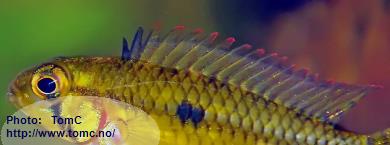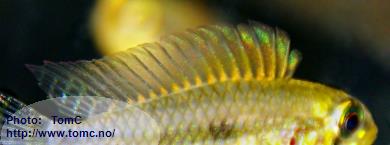January 03, 2024
I have a tank with many Apistogramma cf. sp. "Segelflossen" (Río Muco, Colombia).
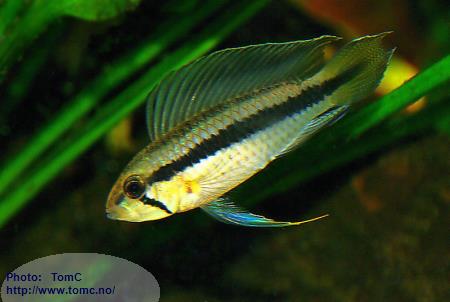
Most days, the males look like this:
Today was one of those magical days (there are a few of them every year) when most of the adult males simultaneously seemed to think "I want to be the alpha male and spawn with all the females, I just have to learn the other males to show me respect". The displaying males looked gorgeous:
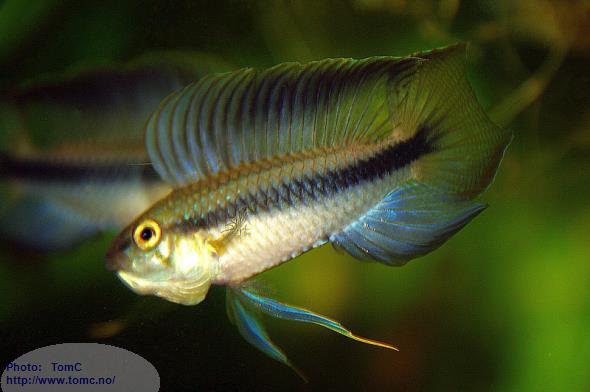
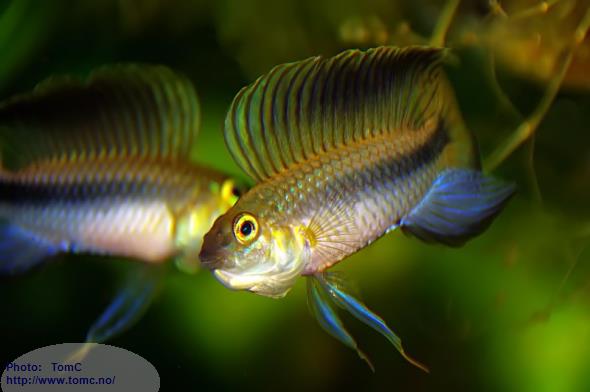
December, 2023
On Christmas day, two more species showed me their newly hatched fry:
Apistogramma. sp. "Oregon"(Wild):
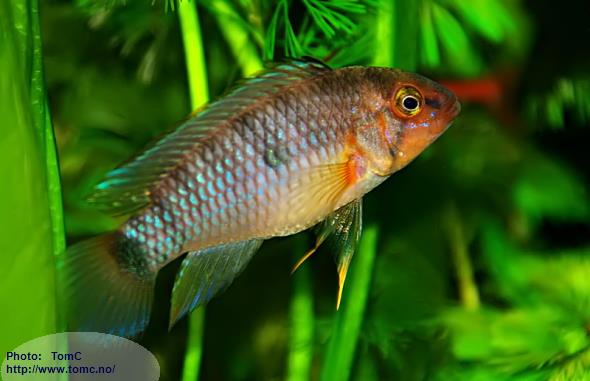
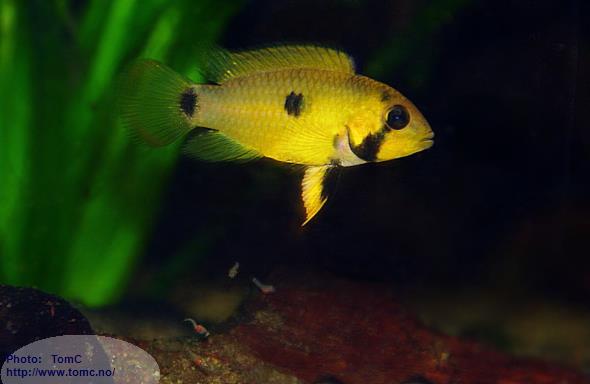
and Apistogramma guttata:
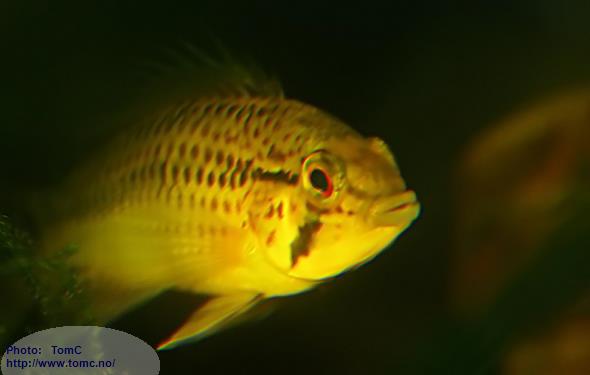
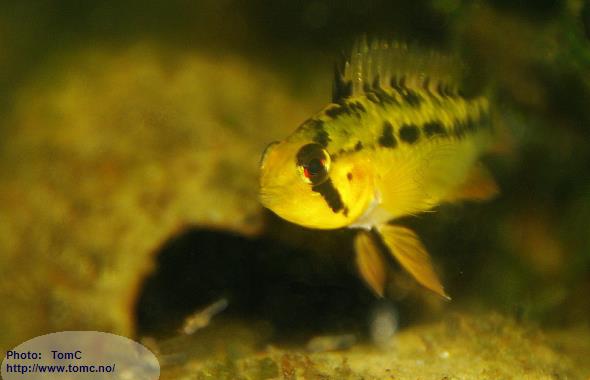
One of my males of A. sp. "D60" (Location 11) has a funny anal fin:
The one with an abnormal anal fin
and one with a normal anal fin
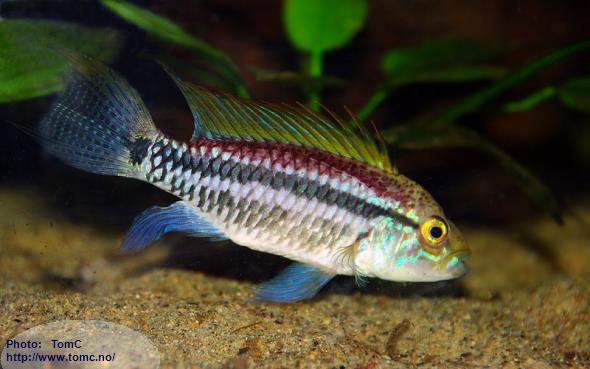
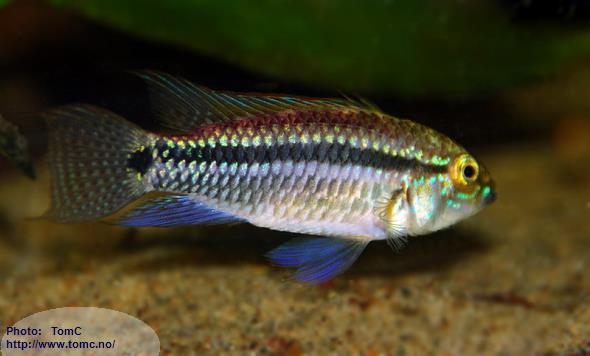
Some of the species with fry right now:
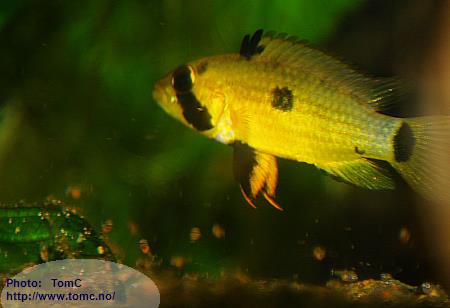
Now my other wild A. sp. "Ladislao" female (in another tank) brought out fry too:
At least two females of the Apistogramma eremnopyge have fry now:
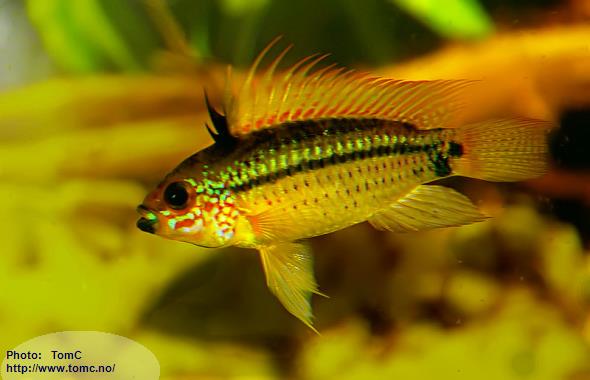
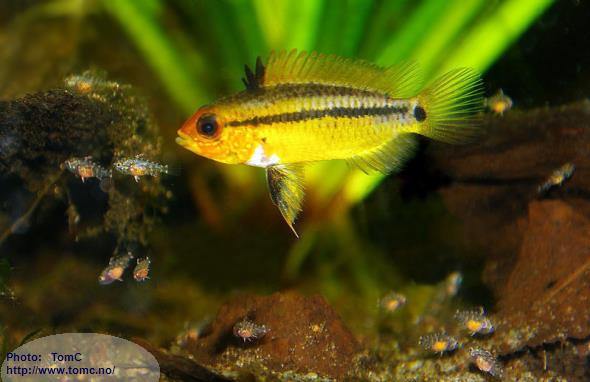
The female Apistogramma rositae with fry has a hard time defending the kids: there are several other specimens of the same species in the tank. She keeps her young out in the open, maybe to more easily see when other specimens approach:
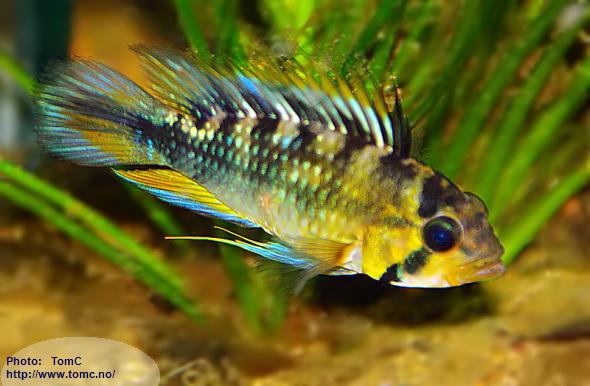
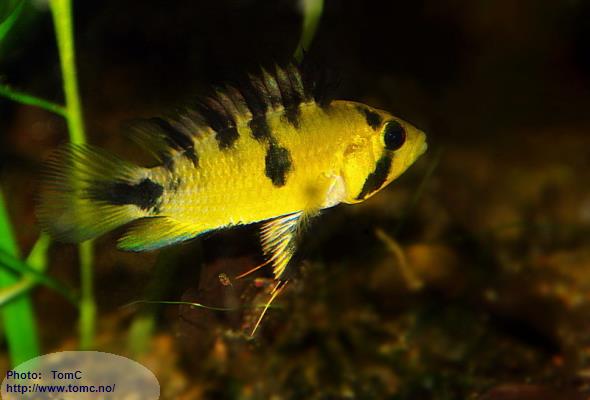
Two females Apistogramma psammophila produced fry. One of them abandoned hers, to spawn again, and her fry moved over to the other female with fry:
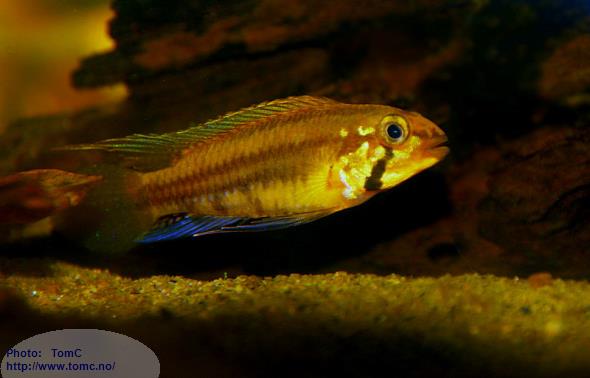
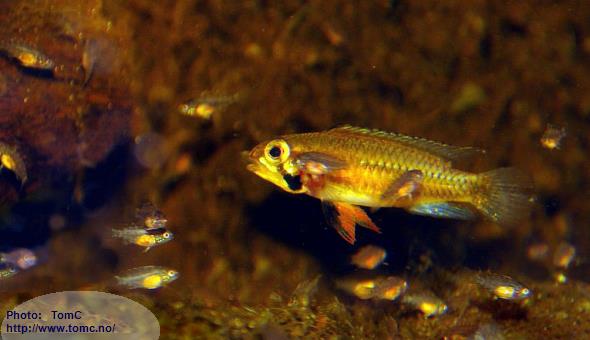
First time mother of the Apistogramma sp. "Balsapuerto" (A sp. aff. bitaeniata (Cenepa)) didn't produce many fry, only around 15:
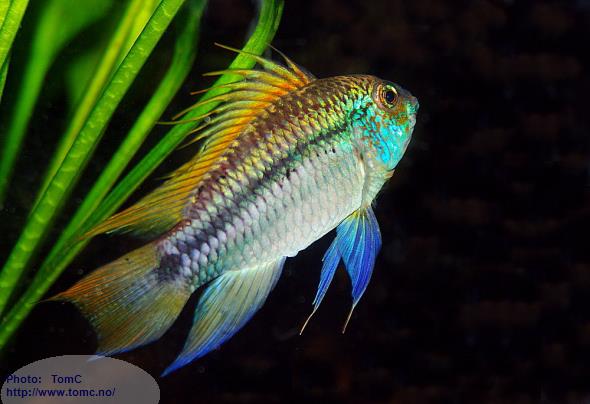
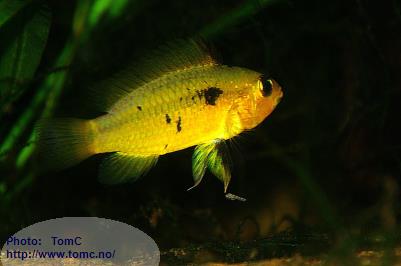
One of my females of Apistogramma sp. "Ladislao", from the Río Morona in Peru, didn't hesitate when arriving in my tank. Lots of fry:
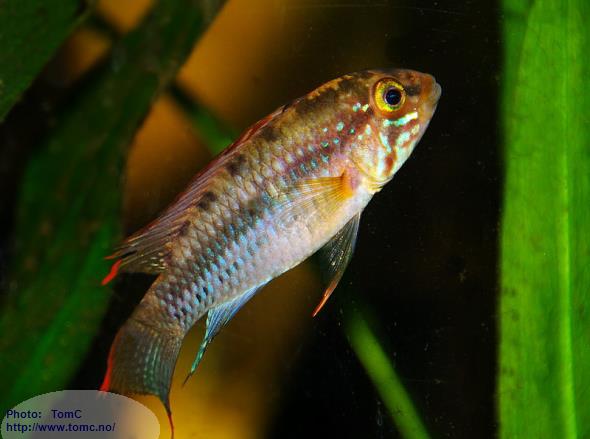
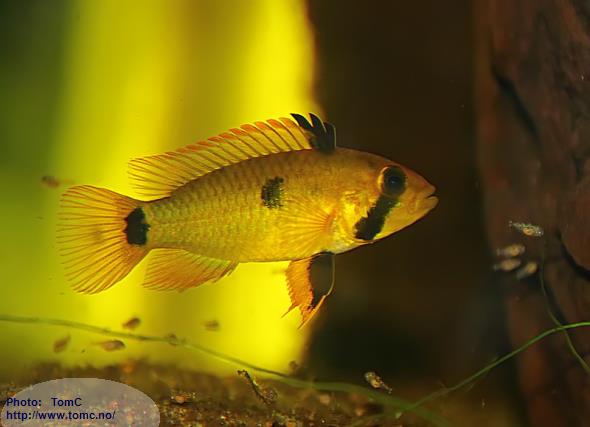
A couple of females of the Apistogramma sp. "D18", produced fry, in the same tank. And after a while they spawned again. Now there are many fry, of various age and size, in the tank:
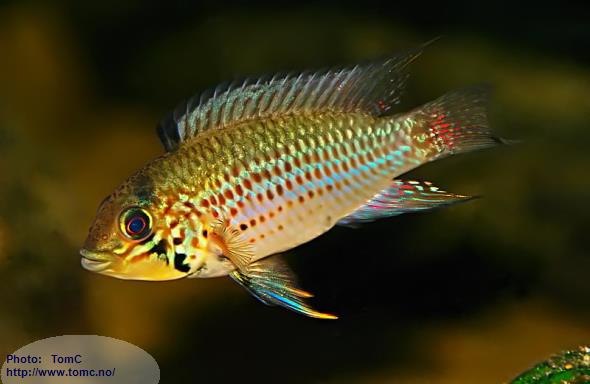
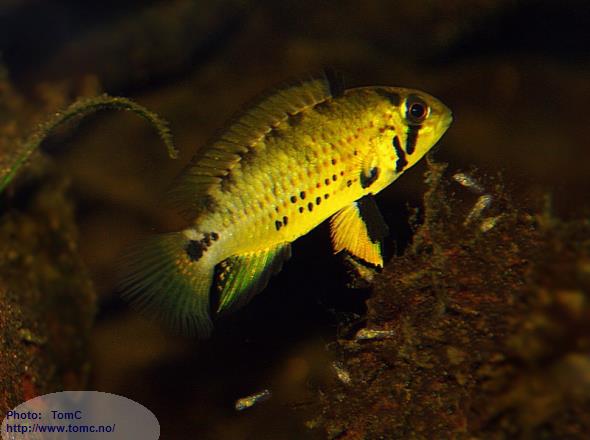
The Apistogramma sp. "Alto Tapiche", looked amazing when it was collected, this time:
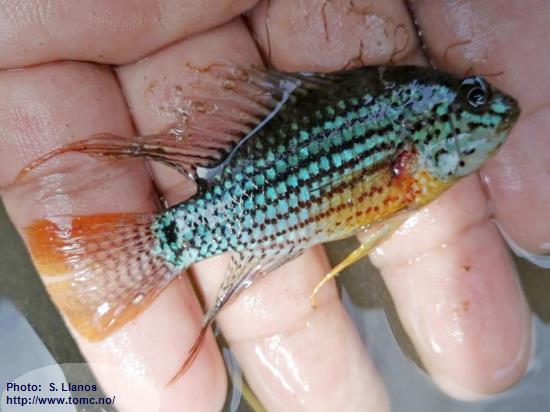
Three females spawned in the same tank, but the only male in the tank has taken over the more than 100 fry from all the females:
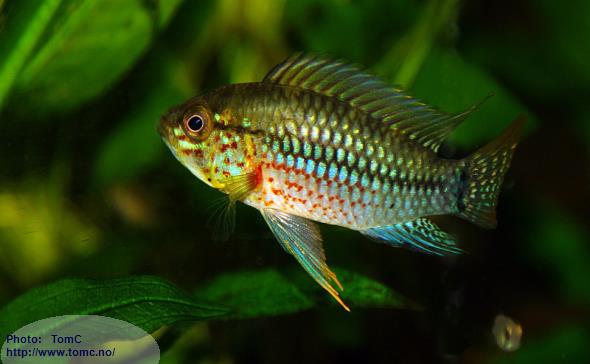
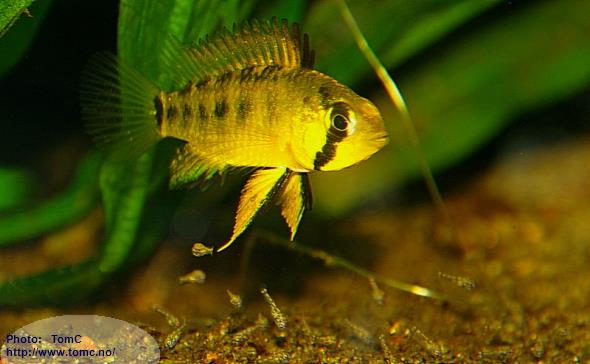
March 07, 2021
The Apistogramma sp. "D45" was found and collected in Colombia in 2017, in beautiful blackwater:
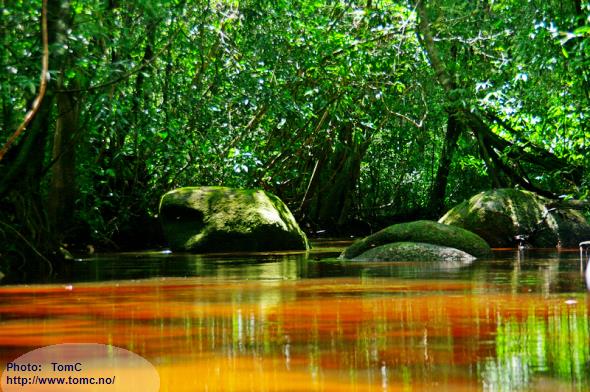
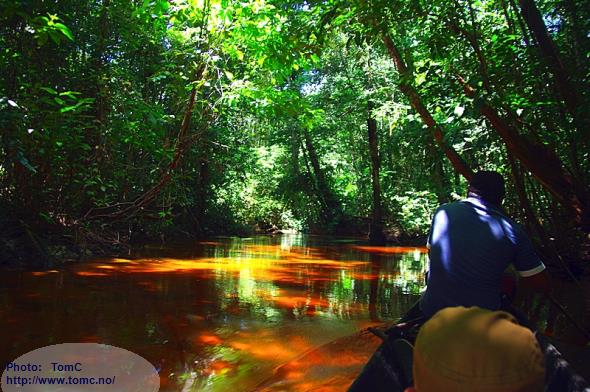
In the bag, when they were collected:
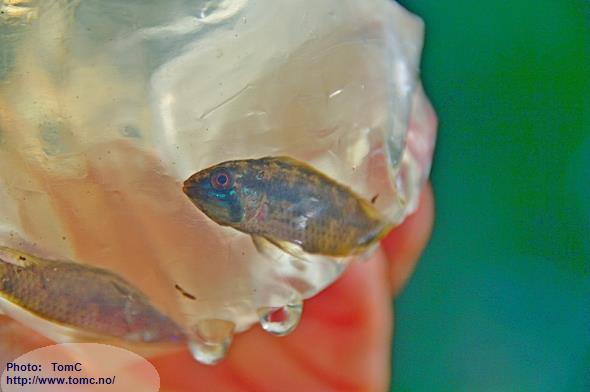
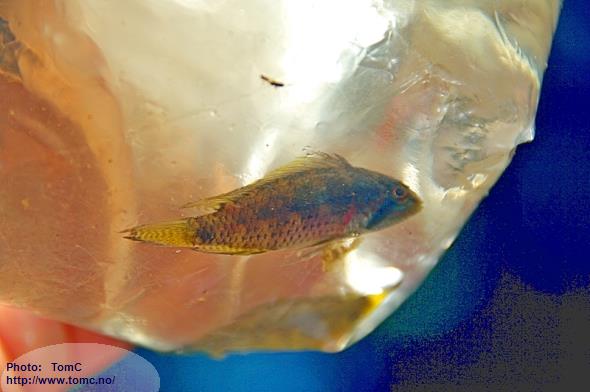
Males, after brought home, in aquariums:
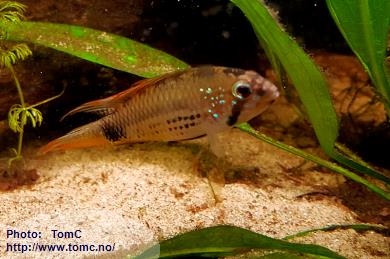

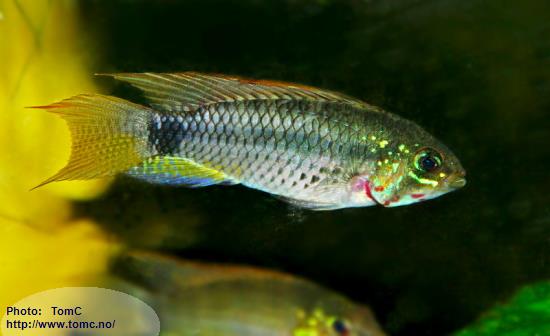
When the water is more clear than black, they mostly look like this:
When the water now is dark blackwater, the males look like this in my tanks:
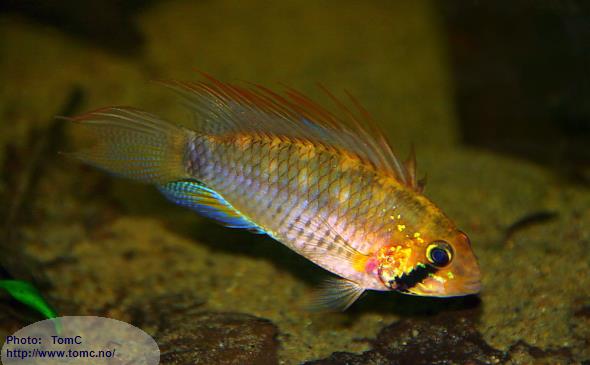
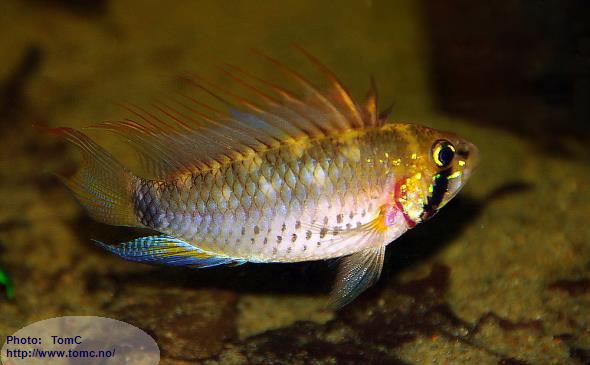
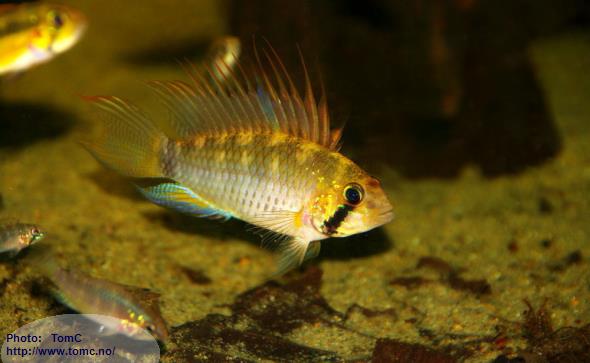
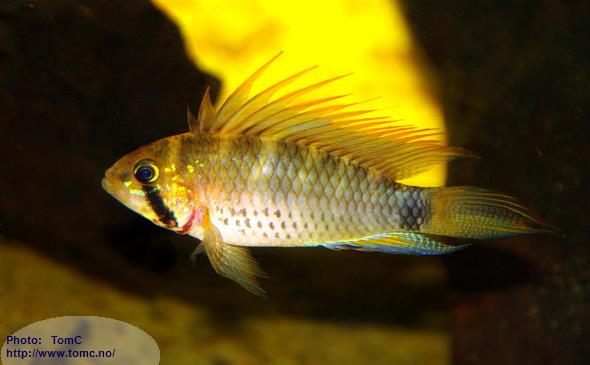
When in dark blackwater, the females most of the time are with fry and/or wear breeding colors:
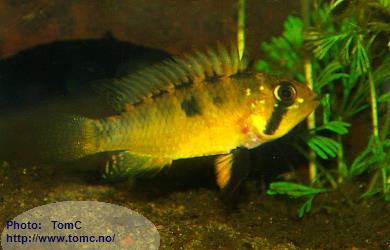
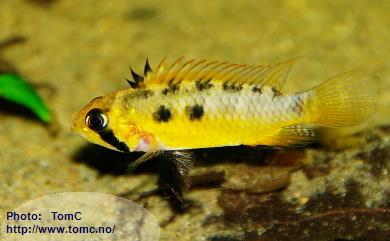
The Apistogramma sp. "D45" seems to be a local form of the A 165, Apistogramma cf. piaroa.
Feb 14, 2021
I selected a wild male and a female from one of my Apistogramma psammophila groups. They have never been a pair, or spawned.
I gave them a 160 liter tank for themselves: ph: 4.2 Conductivity: 70 microSiemens/cm Temp: 25°C
Blackwater with color from Alder cones, Oak leaves and peat.
The only company they have is a small mixed group of Nannostomus eques
and Nannostomus unifasciatus.
They spawned after a while, and today the father was the one to bring out the freeswimming fry! The female is so far not allowed to approach the
small ones:
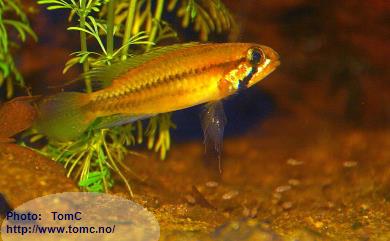
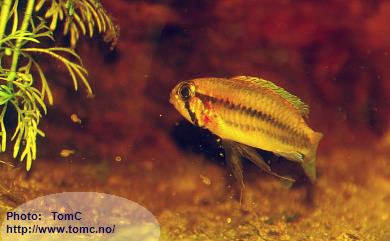
Jan 12, 2021
In contrast to the Apistogramma sp. "D52", the Apistogramma sp. "D58" is very prolific.
The first wild pair to breed
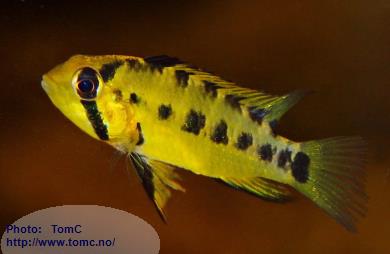
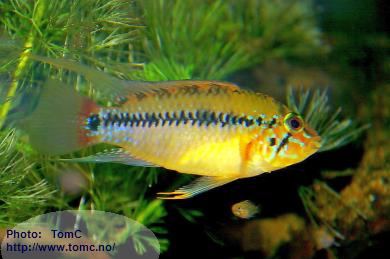

now has youngsters approaching adult size:
This last pair out to breed
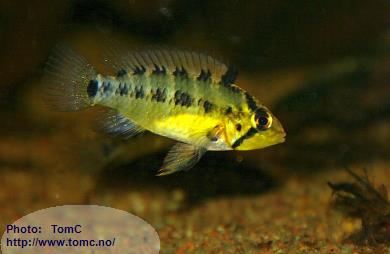
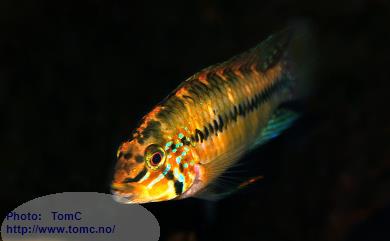
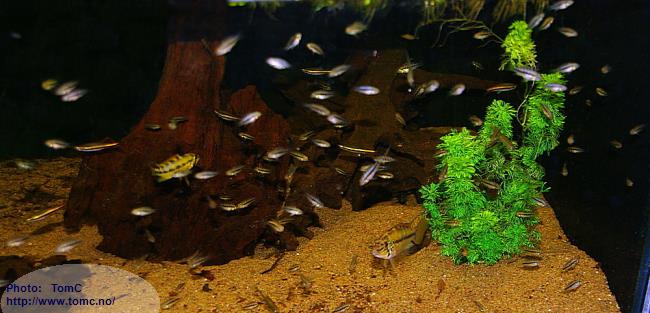
now has at least 104 fry!
The parents with some of them:
The dither fish are a few very interesting Nannostomus sp. aff. digrammus which I collected in Colombia
in December 2019.
They have several features similar to Nannostomus digrammus (FOWLER, 1913), but this species has never been reported from Colombia.
In addition, my specimens show a tertiary horizontal stripe, which in the Nannostomus digrammus is absent.
Males:
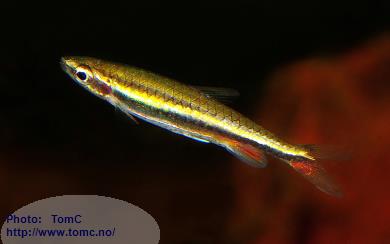
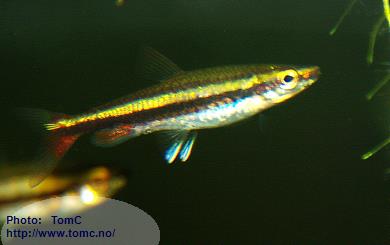
Females:
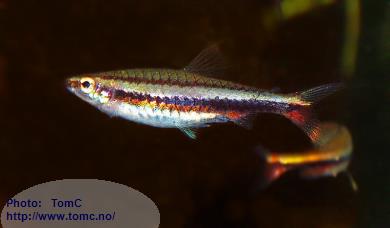
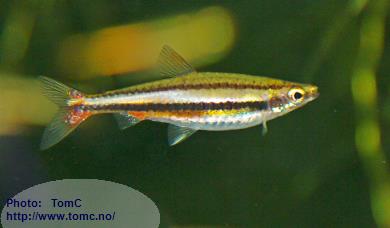
Jan 11, 2021
My wild Apistogramma sp. "D52" are so far, in my tanks, not as prolific as many other Apistogramma species.
I have never had more than 20 fry growing up from any of my wild pairs.
These first time parents now have only 6 small fry:
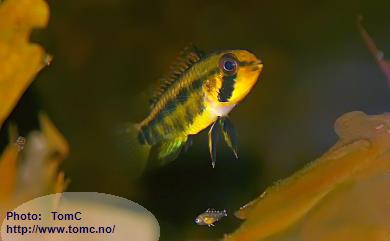
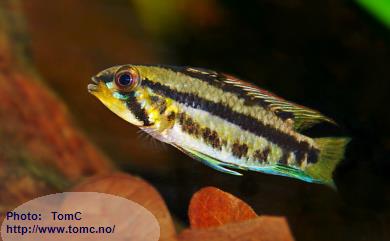
Dec 12, 2020
My wild Apistogramma sp. "D48" may be a Colombian form taxonomically closely related
to
Apistogramma inornata (STAECK, 2003), which was described from Venezuela.
They now have fry again. The females show some minor variations in their breeding dresses:
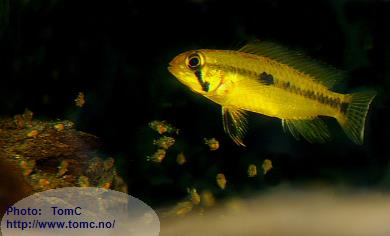
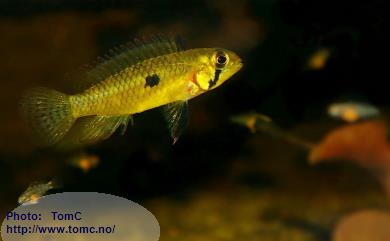
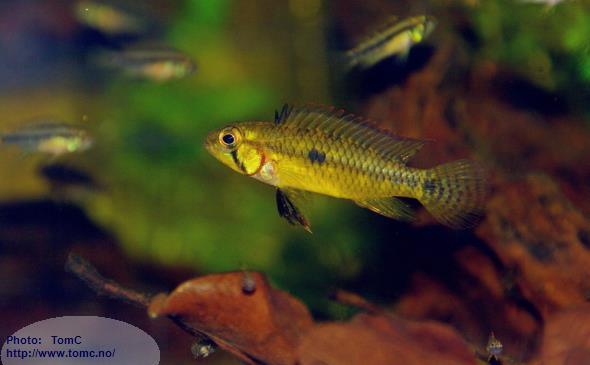
There are fry from three spawnings (from two different females) in the tank, without any problems.
Here some older fry swim in the background, and a few of the youngest ones with their mother in front.
The males of A. sp. "D48" can show very variable appearance:
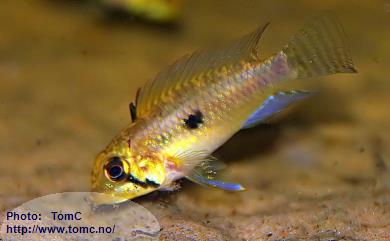
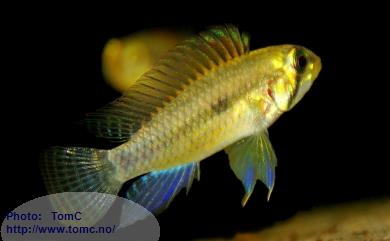
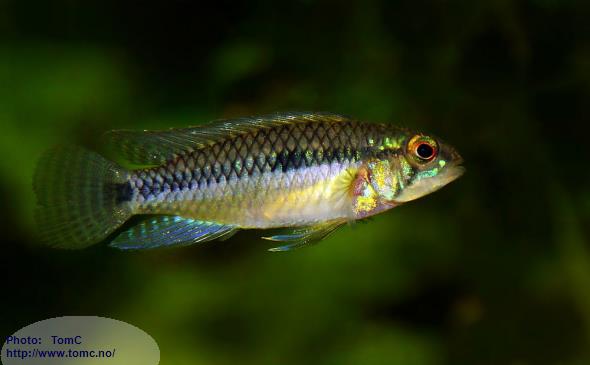
and yesterday one of them looked like this:
Amazingly, in this species the females' dorsal fins have reddish tips, and are more serrated than those of the males:
